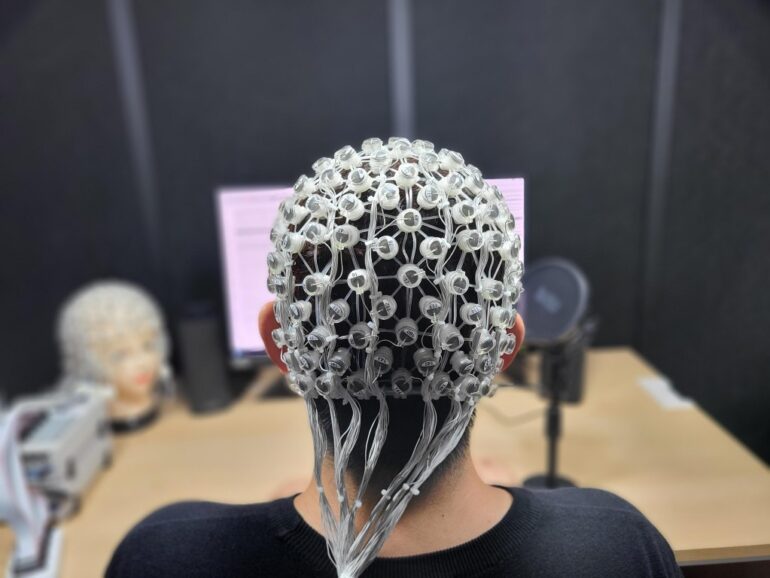TL;DR:
- Scientists have successfully used AI and EEG technology to translate human thoughts into written text.
- The breakthrough technology combines a sensor-equipped helmet and an AI model named DeWave.
- Initial accuracy stands at 40%, but recent data suggests an accuracy rate exceeding 60%.
- Participants in the study can now silently convey their thoughts, eliminating the need for spoken words.
- The technology holds promise for individuals who have lost speech, such as stroke survivors, and has potential applications in robotics.
Main AI News:
In a groundbreaking development, a team of scientists has harnessed the power of artificial intelligence to translate human thoughts into written text, using nothing more than a sensor-equipped helmet. This revolutionary technology represents a significant leap forward in the realm of neuroscience and communication.
During the study, participants donned a specialized cap fitted with sensors that meticulously recorded electrical brain activity via the scalp. These electroencephalogram (EEG) recordings were then seamlessly transformed into coherent written text with the assistance of an advanced AI model named DeWave.
Dr. Chin-Teng Lin, a distinguished researcher at the University of Technology Sydney (UTS), Australia, underscores the non-invasive, cost-effective, and easily transportable nature of this remarkable technology. While DeWave’s initial accuracy stood at approximately 40 percent, recent data, currently undergoing peer review, suggests an impressive improvement, with an accuracy rate exceeding 60 percent.
The study, presented at the prestigious NeurIPS conference in New Orleans, Louisiana, witnessed participants reading passages aloud, despite DeWave’s unique ability to decode thoughts without reliance on spoken words. However, the team’s latest research advances the methodology as participants can now silently convey their thoughts.
Notably, last year, a research team led by Jerry Tang at the University of Texas at Austin achieved similar accuracy in converting thoughts into text but relied on MRI scans to decipher brain activity. The shift to EEG is a pragmatic one, as it eliminates the need for subjects to remain immobile inside a scanner.
Charles Zhou, a key member of the research team at UTS, explains that DeWave’s training process involved analyzing numerous instances where specific brain signals corresponded with particular sentences. “DeWave learns how these signals relate to the word ‘hello’ by seeing many examples of these signals for different words or sentences,” Zhou elucidates.
The integration of DeWave with an open-source large language model (LLM), akin to the AI driving ChatGPT, marks a pivotal moment. Zhou elaborates, “This LLM is like a brainy writer that can craft sentences. We instruct this writer to harness the signals from DeWave as a guiding force to construct sentences.” The collaboration culminated with both DeWave and the language model undergoing joint training, resulting in even more adept sentence generation based on EEG data.
With continuous refinement and fine-tuning, the research team envisions a future where this system could transform communication for individuals who have lost their ability to speak, such as stroke survivors, while also finding applications in the realm of robotics. Dr. Craig Jin from the University of Sydney lauds Lin’s team’s remarkable progress, emphasizing, “It’s an exceptional achievement that brings us closer to fulfilling the longstanding aspiration of converting EEG into coherent text, which, until now, had been mired in incoherence and absurdity.”
Conclusion:
This remarkable achievement in mind-reading AI technology represents a significant step forward in communication and assistive technologies. With an accuracy rate expected to exceed 60%, it has the potential to transform the market for communication aids, particularly for individuals who have lost their ability to speak due to conditions like stroke. Additionally, its applications in robotics could open up new opportunities for automation and human-machine interaction.

